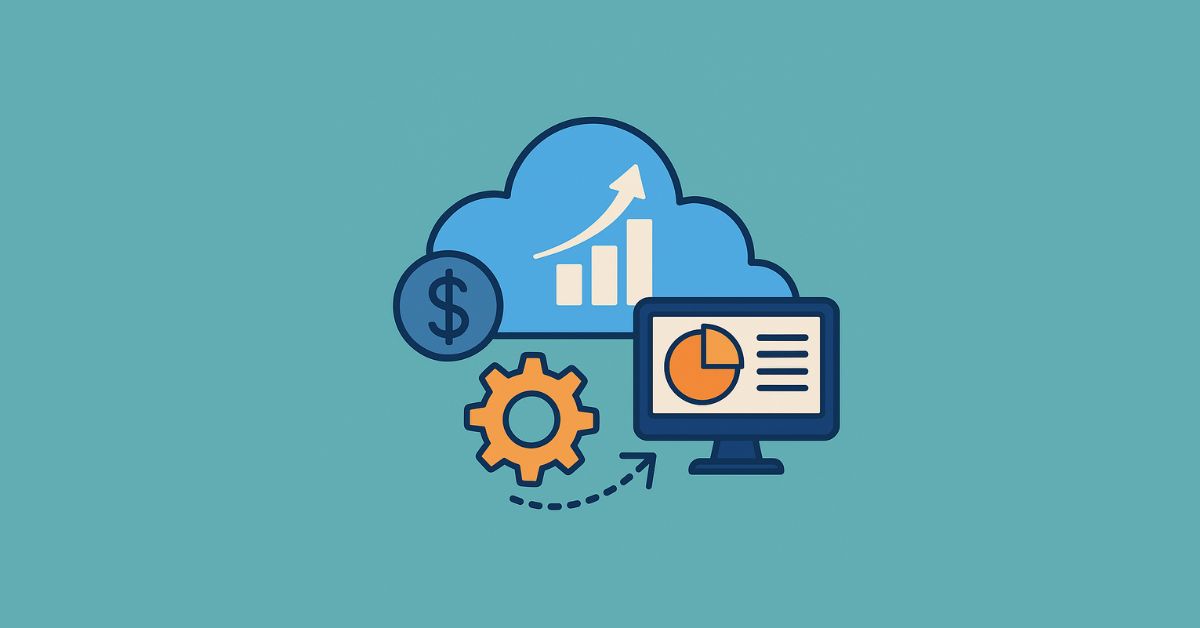Summary
In today’s digital landscape, businesses are rapidly embracing cloud computing to scale efficiently, deliver value faster, and reduce upfront infrastructure costs. However, as organizations scale their workloads in the cloud, managing expenses becomes a challenge, especially when resources are overprovisioned or underutilized. This is where Azure cloud cost optimization comes into play. By implementing the right strategies, businesses can manage their Azure expenditures effectively without compromising on performance.
Let’s explore the best practices for Azure cloud cost optimization, along with an understanding of Azure Cost Management, its tools, and the importance of cloud cost control.
- Understanding What Is Azure Cost Management
- Why Cloud Cost Optimization Is Important
- Best Practices for Azure Cloud Cost Optimization
1. Right-Size Virtual Machines (VMs)
2. Use Reserved Instances (RIs)
3. Set Budgets and Use Alerts
4. Deallocate Unused Resources
5. Use Spot VMs for Temporary Workloads
6. Tag Resources for Better Cost Allocation
7. Optimize Storage Solutions
8. Monitor and Optimize Data Transfer Costs
9. Enable Auto-Scaling with Limits
10. Leverage Azure Cost Optimization Tools - Integrate Azure Services for Holistic Optimization
- Final Thoughts
Understanding What Is Azure Cost Management
Before diving into optimization techniques, it’s essential to understand what is Azure Cost Management. It is a suite of tools provided by Microsoft that helps users track, allocate, and manage costs associated with Azure resources. It offers visibility into cost drivers, usage patterns, and budgeting tools to keep your expenses under control.
Azure Cost Management allows businesses to:
- Monitor spending trends across subscriptions and resource groups.
- Set budgets and receive alerts when thresholds are reached.
- Allocate costs by department, project, or team using tags.
- Forecast future spending based on historical usage.
These insights are crucial for making informed decisions on resource utilization and ensuring financial accountability within cloud environments.
Why Cloud Cost Optimization Is Important
Cloud adoption, while cost-effective compared to traditional on-premises setups, can lead to unexpected expenses if not monitored correctly. That’s why cloud cost optimization is important — to ensure that your business doesn’t overspend due to misconfigured resources or unused services.
Poor cost management may result in:
- Wastage of resources that run without delivering value.
- Unexpected billing spikes due to autoscaling misconfigurations.
- Inaccurate budget forecasting for cloud infrastructure.
Optimizing costs in Azure ensures better resource utilization, increases return on investment (ROI), and improves overall operational efficiency.
Best Practices for Azure Cloud Cost Optimization
Let’s look at actionable best practices you can implement to optimize your Azure cloud costs:
1. Right-Size Virtual Machines (VMs)
Overprovisioned VMs are one of the primary reasons for inflated Azure bills. Analyze CPU, memory, and storage utilization and match your resources to the actual workload. You can use Azure Cost Management recommendations or third-party tools to identify underutilized instances.
Additionally, use Azure Advisor — a free service that provides personalized suggestions on how to improve performance, security, and cost-efficiency — to get right-sizing recommendations.
2. Use Reserved Instances (RIs)
If your workloads are predictable and long-term, consider purchasing Azure Reserved Instances. These allow you to commit to a one-year or three-year term, providing up to 72% savings compared to pay-as-you-go pricing.
You can apply reservations to VMs, SQL databases, Cosmos DB, and other eligible services. Review your usage patterns with Azure cloud cost management reports to identify areas where RIs make sense.
3. Set Budgets and Use Alerts
Establishing budgets is crucial for maintaining financial control. Azure allows you to define budgets at various levels — subscription, resource group, or department. Set spending limits and configure alerts to notify teams before thresholds are crossed.
This proactive approach prevents cost overruns and aligns spending with business objectives.
4. Deallocate Unused Resources
Resources like VMs, test environments, and development databases often run unnecessarily during off-hours. Identify idle or unused resources and automate their deallocation or shutdown using Azure Automation or Logic Apps.
You can also leverage cloud migration tools that include cost assessment features to identify redundant services during migration planning.
5. Use Spot VMs for Temporary Workloads
Spot VMs offer significant cost savings (up to 90%) compared to regular VMs. These are suitable for workloads that can tolerate interruptions, such as batch processing, rendering, or test environments. Integrating Spot VMs into your strategy contributes significantly to Azure cloud cost optimization.
6. Tag Resources for Better Cost Allocation
Tagging Azure resources helps in organizing and tracking costs by project, department, or team. Tags like Environment: Production or Team: Marketing make it easier to analyze expenses and optimize accordingly.
This also helps stakeholders understand their consumption and take ownership of their cloud budgets.
7. Optimize Storage Solutions
Data storage can be a hidden cost in the Azure cloud. Utilize different storage tiers — hot, cool, or archive — depending on how frequently data is accessed. For instance, archival data can be moved to Azure Archive Storage, which is cheaper but suitable for infrequent access.
Also, regularly delete unused disks, snapshots, and backup data that are no longer required.
8. Monitor and Optimize Data Transfer Costs
Data egress — moving data out of Azure — can incur significant costs. Design your architecture to minimize cross-region data transfers, and use Azure Content Delivery Network (CDN) to cache frequently accessed content closer to end-users.
9. Enable Auto-Scaling with Limits
While autoscaling is great for handling dynamic workloads, improper configuration may lead to cost surges. Set upper limits for auto-scaling and monitor usage patterns to ensure you only scale when necessary.
10. Leverage Azure Cost Optimization Tools
In addition to the built-in Azure cost optimization tool features like Azure Cost Management + Billing and Azure Advisor, there are third-party platforms like CloudHealth, CloudCheckr, and Spot.io that provide advanced cost insights and automation features.
These tools integrate seamlessly with Azure and enhance visibility, governance, and automation for managing costs at scale.
Integrate Azure Services for Holistic Optimization
Combining the above strategies with other Azure services, such as Azure Monitor, Azure Logic Apps, and Azure Functions, allows you to create automation workflows that manage costs efficiently. For example, you can configure alerts through Azure Monitor to trigger actions like VM shutdowns or scale-downs using Logic Apps.
Final Thoughts
Azure cloud cost optimization isn’t a one-time task — it requires continuous monitoring, refinement, and governance. By adopting best practices like right-sizing resources, leveraging Reserved Instances, automating idle resource shutdowns, and utilizing Azure cost management tools, organizations can gain complete control over their Azure spending.
With cloud becoming the backbone of digital transformation, optimizing your Azure investments ensures both financial sustainability and optimal performance. Take a proactive approach to cost control, educate teams, and embrace tools that align with your business goals.
Implementing these strategies not only helps reduce cloud costs but also builds a strong foundation for long-term growth and scalability in the cloud.







